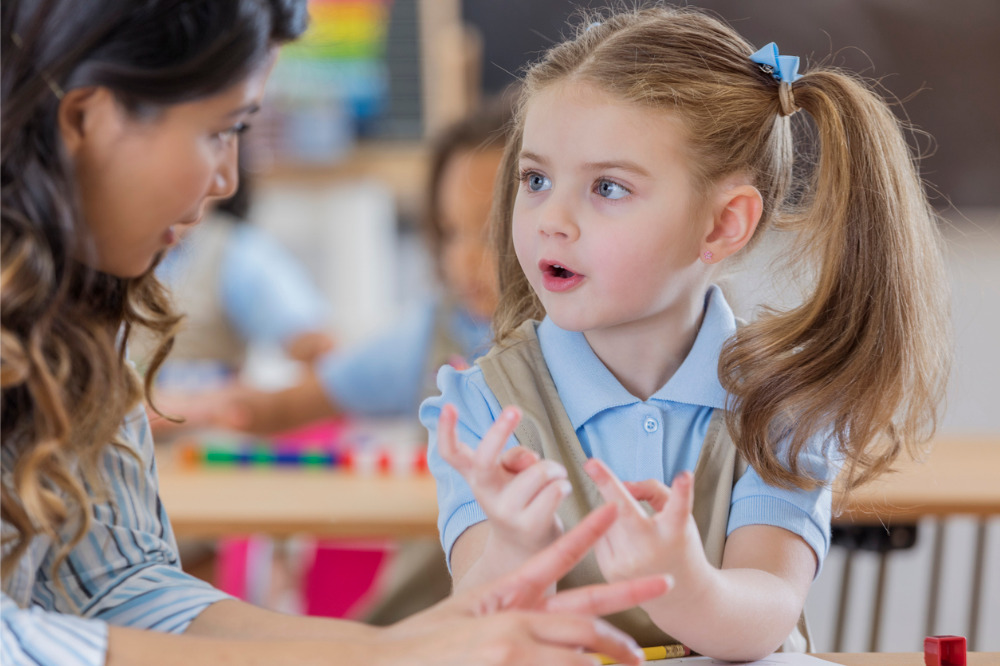
Earlier this year, the NSW Government released its new Student Behaviour Strategy to help schools promote and manage positive, inclusive and safe student behaviour.
According to some experts in special needs education, the “manage-and-discipline” model used in most Australian schools is not effective in managing children’s behaviour.
Dr David Armstrong, a Senior Lecturer Inclusion and Disability at RMIT University, says students with disabilities are taking the brunt of the model’s impact.
“The risk of disengagement becomes particularly acute when the model is used on students with disabilities… and is one reason for their over-representation in programs for disengaged or educationally excluded young people,” he said.
“Another issue for some children with disabilities is that they might not be able to process certain instructions as quickly as their peers.”
Simplify the question without simplifying the idea
Dr David Roy, a lecturer in education at the University of Newcastle, works closely with disability advocate groups and governments to support vulnerable young people and help them succeed.
He says inclusive education has no one solution, as each child who needs a reasonable adjustment can often require an individual solution. Fortunately, says Dr Roy, most of these are simple and require minimal effort.
“First, think as a teacher what you wish to achieve. If you want a child to demonstrate deep understanding, how many questions do they need to answer to demonstrate this – can there be less evidence to demonstrate the same outcome success?” Dr Roy told The Educator.
“Secondly, processing questions or responses can be a challenge; this does not mean the child does not understand a concept or idea. Thus simplify the question without simplifying the idea – at times closed questions work better than open ones.”
Dr Roy says it is helpful to break tasks into achievable goals that can then be built upon.
“This can be referred to as ‘jigsawing’ knowledge. Small pieces that make a bigger whole,” he explained.
“Educators, parents and carers can also offer alternative methods to communicate understanding. Does it need to be written in complex sentences – can it be spoken, or vice versa?”
Consider the child’s physical environment
Dr Roy pointed out that some children need to be allowed to move to keep their muscles awake, so it’s important to allow them to lie in a corner or stand and write or move.
“Sometime a child needs to have a repetitive movement to focus, such as tapping a desk. A simple solution I found for a child who did this [and the tapping did distract others] was to put felt on the corner of the desk that the child tapped on,” he said.
“Even moving a desk away from bright lights, or an air conditioner or nearer a window and support those who get affected by external sensory issues and allow them to focus.”
Dr Roy said the heart of any adaptation is look at what the child can do well.
“Look at what barriers are potentially there, and what barriers can you adapt and move; whilst harnessing the child’s strength,” he said. “One child I know loved DC superheros such as Aquaman and Superman. We tried to frame questions in relation to them, whether it was Geography or Maths or English close reading.”
Dr Roy said the child received the same work as others, but a quiet conversation involved “now if it was Aquaman who was looking at this…” and suddenly the child was engaged.
“Engage the child at their interest – not yours. Child centred learning works better.”
Use technology, but match it to skills such as writing
Dr Roy said allowing children flexibility when it comes to how they write is important, as different kids will have different preferences.
“Some children find it easier to write with a pen, others a pencil, so get rid of hurdles such as punitive ‘pen licences’ and allow a child the best method to succeed,” he said.
“For some children, I have allowed them to write on a laptop first then translate to handwriting – so ideas and technical skills are seen as separate.”
For others, Dr Roy encourages them to hand write first then translate to a laptop.
“Again, separating the two different assessable elements -ideas and writing. The best idea though is to listen,” he said. “There are better experts than you in the child’s needs.”
Dr Roy said the most important one is the child themselves.
“Listen to the student voice. The other, is the parent/guardian. They know the child better than you; no matter your pedagogical excellence,” he said.
“So, speak to the child; speak to the parent/guardian, and ask what works and what can help. Then listen. If possible, apply their ideas.”


